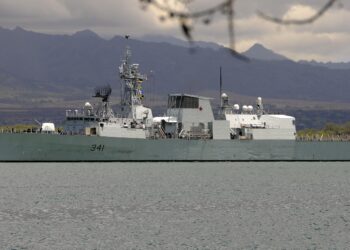Agence France-Presse,
The new capability of the Tamil Tigers to carry out airborne attacks has not only made them a rarity among the world's guerrilla outfits but has also badly shaken an entire country.
Sri Lanka's defence ministry has acknowledged that the Tigers may be operating at least five light aircraft, used in three headline-grabbing raids against military and civilian targets over the past month.
The Tigers already possess an effective naval unit known as the Sea Tigers.
The Tiger air force may be minuscule compared with Sri Lanka's fleet — which comprises supersonic jets, spy planes and helicopter gunships — but so far government forces have failed miserably in countering the flying Tigers.
“You can understand that the Tigers will use a light aircraft once, but there is something wrong when the air force is not able to take it out after three attacks,” said retired brigadier general Vipul Boteju.
The authorities switched off power to the capital of one million people when the Tigers carried out their third bombing raid here on Sunday, targeting two oil depots. The city was thrown into a state of panic.
In the wake of the attack, several international airlines announced they were cancelling or altering their flights to the island's only international airport, whose runway is also used by Sri Lankan air force jets — a prime target for the rebels.
The Sri Lankan military, however, is insisting that the Tiger air threat is a “joke.”
“These light planes can't do much damage,” said army chief Sarath Fonseka, who appeared on national television shortly after the guerrillas bombed the main military complex in the north of the island last week.
“It is a joke. You can drop a bomb from any flying thing. Even tossing a grenade while riding a swing is an 'air attack,'” Fonseka said.
“The maximum damage that the Tiger planes can do is equivalent to two mortar bombs hitting a bunker,” Fonseka added, asserting that the armed forces were capable of taking care of the guerrilla's new air wing.
Pictures released by the Tigers indicate they operate Czech-built Zlin Z-143 single engine, four-seater light aircraft modified to carry four bombs mounted on the undercarriage.
According to Morovan Aeroplanes, which manufactures the Zlin, the Z-143 is a versatile airplane designed “for the pilots who want more than straight flying from point A to point B.”
“Night and IFR (instrument flight rules) training and flying and great flight characteristics and additional instruments make the ZLIN easy to fly at night or (in) low visibility conditions,” according to Morovan.
It is not clear whether the Tigers have extensively modified the aircraft, which military sources believe may have been bought from a source in South Africa, but the standard version has a wing span of just over 10 metres (33 feet) and an endurance of up to five hours and 10 minutes.
It has a maximum level cruising speed of 260 kilometres (162 miles) an hour and cannot be intercepted by the supersonic jets of the Sri Lankan air force, which are too fast and do not have air-to-air attack capability.
The two passenger seats can be removed to give room for extra fuel and a bigger payload. It can take off and land from unprepared surfaces, needing only 640 metres to take off and 765 metres to land.
Shortly after the first Tiger attack on its main airbase, which shares a runway with the international airport, the air force said it failed to bring down the Tiger aircraft because it did not have night flying capability.
A week later the government announced it was carrying out night time air raids against suspected Tamil Tiger positions to demonstrate it was by then able to fly at night. But the Tigers have flown two more night sorties unchallenged.
The only time a Mi-24 helicopter gunship was scrambled to intercept the flying Tigers, the chopper developed engine trouble and crash landed.
Sri Lanka's military was aware of an air strip built by the Tigers for several years and in 2005 the government lodged a formal complaint with Nordic truce monitors who are observing a now moribund ceasefire.
It is not clear if the Tigers use the clearing in Iranamadu, which can be clearly seen on satellite images, as the base for their Zlin aircraft. The clearing has been bombed by the air force several times.
Military sources believe that the Tigers smuggled in the aircraft in knocked-down form two years ago and assembled them in territory held by them.
The lax supervision soon after the December 2004 tsunami may have helped the Tigers, according to defence sources.
Speaking to Colombo-based diplomats, a top military officer on Monday admitted that security forces were “still learning” how to deal with the new threat from the Tigers, who are better known for their suicide bombings.









